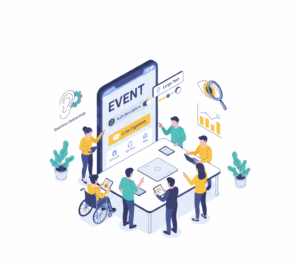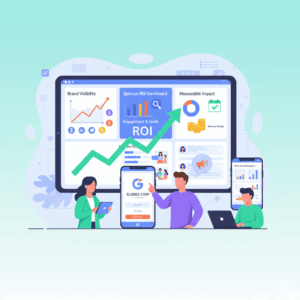Why does email still dominate internal communication?
Email was designed for correspondence, not constant collaboration. Yet most organizations still rely on inboxes for updates, announcements, and critical information. The result? Overstuffed inboxes, missed deadlines, and employees spending more time searching than acting.
I’ve seen entire teams lose momentum because the right update was buried under newsletters, automated notifications, and reply-all chains. At Yapp, many of us remember when “catching up on email” was a daily chore that ate into the time we could’ve used to actually collaborate.
The real issue isn’t just volume—it’s that email isn’t built for urgency or alignment. When communication is fragmented, employees check out. That’s why more leaders are rethinking how to modernize their internal communication app strategy.
👉 Related: How to Make an Internal Communication App for Your Business
What makes email overload so costly?
Here’s what we hear most often when companies describe the pain:
- Important updates get missed. Even critical policy changes or schedule shifts are lost in inbox noise.
- Slow response times. Employees don’t see updates until hours—or even days—later.
- Low employee engagement. When updates feel like spam, people disengage and tune out.
- Inconsistent information. Some employees see the latest email; others reference an outdated version.
- Burnout from “always on.” Workers report that constant email notifications bleed into personal time.
One of our teammates at Yapp said it bluntly: “I stopped reading company-wide emails because I knew I’d get the info from my manager anyway.” That’s not alignment—it’s avoidance.
Research shows the average employee spends nearly 28% of their week on email. Imagine reclaiming even half of that time.
So what’s the alternative to inbox overload?
The solution is to centralize updates in a mobile hub—your own internal app. Instead of scattering announcements across inboxes, Slack threads, and printed memos, teams get one consistent source of truth.
Here’s what happens when organizations replace email chaos with a mobile-first communication system:
- Push notifications cut through noise. Urgent updates go straight to employees’ phones.
- One source of truth. Everyone accesses the same, always up-to-date information.
- Higher employee engagement. Interactive features like polls and comments encourage participation.
- Flexibility. Updates can be made instantly, without needing IT or long lead times.
- Cost savings. No more printing materials or paying for multiple overlapping tools.
We’ve seen it firsthand. Uncubed, a fast-growing events company, used to juggle email lists and printed materials just to keep attendees informed. After switching to Yapp, they cut costs by over $100,000 and boosted engagement with instant push notifications. The same principles apply internally—mobile apps make updates timely, visible, and easy to act on.
👉 Also see: The 4 Best Apps to Improve Employee Communication at Events
How do organizations put this into practice?
I’ll be honest: shifting away from email feels uncomfortable at first. But the payoff is huge. At Yapp, we’ve helped teams across industries—from retail to telecom—make the move. Verizon, for example, used Yapp to replace regional email blasts with mobile apps for trainings. Their employees loved the immediacy and clarity, and the company shaved 10% off annual event costs.
When we walk customers through adoption, these are the steps that make it stick:
- Start small. Pick one team or function (like HR updates or training events) to pilot.
- Make it familiar. Brand the app with your company’s look and tone so it feels natural.
- Prioritize clarity. Use short, actionable updates instead of long messages.
- Engage actively. Add polls, Q&A, or recognition features to boost employee engagement.
- Measure results. Track adoption, push notification open rates, and employee feedback.
One of my favorite Yapp wins came from Cole Haan. Their retail field staff used a Yapp app as a private social network to share styling ideas and recognize achievements. Engagement soared, and employees felt more connected to the brand every day. That’s the difference between information overload and meaningful connection.
The bottom line
Email won’t disappear tomorrow. But relying on it for every internal update creates more confusion than clarity. If your goal is better alignment, faster response times, and stronger culture, it’s time to reimagine your approach with a mobile-first mindset.
At Yapp, we’ve seen how a simple, no-code app can transform not just how teams communicate, but how they feel about the company they’re part of. One colleague put it best: “When updates live in Yapp, we don’t just send messages—we keep people connected.”
Ready to make your next event better? Start your trial now!










